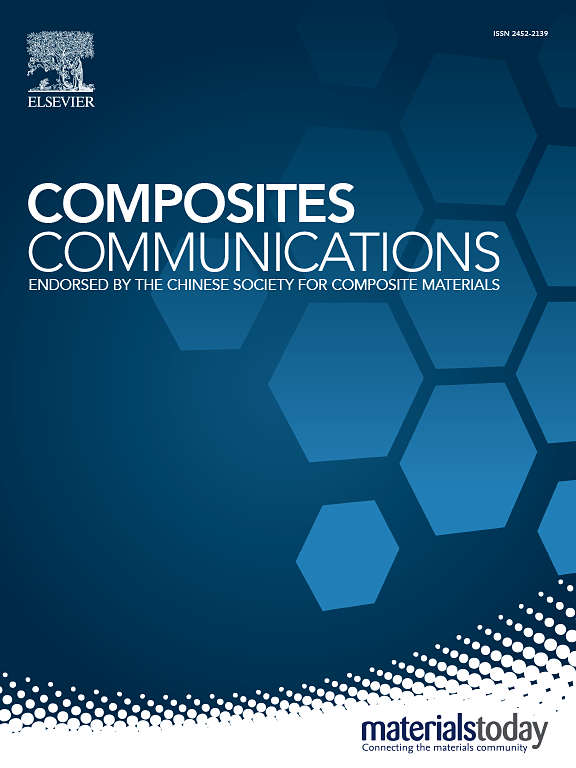Construction of temperature-responsive interpenetrate composite with enhancement in mechanical strength for switchable electromagnetic interference shielding
IF 6.5
2区 材料科学
Q1 MATERIALS SCIENCE, COMPOSITES
引用次数: 0
Abstract
The development of switchable electromagnetic interference (EMI) shielding materials capable of adapting to environmental changes is of great significance in the fields of smart electronic devices. In this study, we present a temperature-responsive composite comprising graphene aerogel and poly(N-isopropylacrylamide) (PNIPAAm). The resulting composite exhibited a distinct EMI shielding effectiveness (EMI SE) below and above the critical solution temperature of 32 °C. This behavior is attributed to the movement of PNIPAAm chains, which results in the delamination and re-stacking of reduced graphene sheets. At 20 °C, the EMI SE of the composite did not reach the target value for commercial applications, and at 50 °C, its total EMI SE values exceeded 20 dB. In addition, the graphene aerogel prepared from graphene oxide with larger lateral dimensions enhances the mechanical strength and the overall structural integrity. This work demonstrates that temperature-responsive characteristics can be employed in the design of intelligent EMI shielding materials capable of adapting to environmental changes.
求助全文
约1分钟内获得全文
求助全文
来源期刊

Composites Communications
Materials Science-Ceramics and Composites
CiteScore
12.10
自引率
10.00%
发文量
340
审稿时长
36 days
期刊介绍:
Composites Communications (Compos. Commun.) is a peer-reviewed journal publishing short communications and letters on the latest advances in composites science and technology. With a rapid review and publication process, its goal is to disseminate new knowledge promptly within the composites community. The journal welcomes manuscripts presenting creative concepts and new findings in design, state-of-the-art approaches in processing, synthesis, characterization, and mechanics modeling. In addition to traditional fiber-/particulate-reinforced engineering composites, it encourages submissions on composites with exceptional physical, mechanical, and fracture properties, as well as those with unique functions and significant application potential. This includes biomimetic and bio-inspired composites for biomedical applications, functional nano-composites for thermal management and energy applications, and composites designed for extreme service environments.
 求助内容:
求助内容: 应助结果提醒方式:
应助结果提醒方式:


